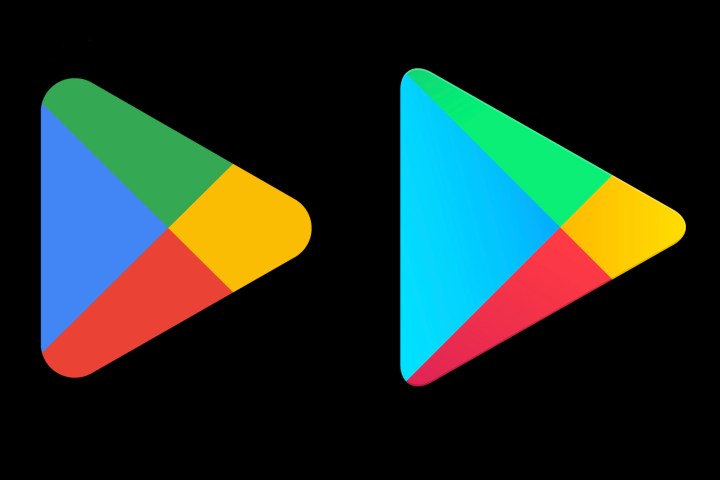Google Play, the app store where you likely get most of your Android apps, has turned 10 years old and to celebrate the anniversary, Google has thrown out the old logo and given the online store an entirely new one. Well, when we say “entirely new,” we may be pushing it a little, as the new Google Play logo is still a multi-colored triangle resembling a traditional play button, so don’t expect a huge change.

What is different exactly? The best way to understand what Google has altered is to look at the old and new logos alongside each other, which you can do in the image above. Although it’s still a triangle, the changes are obvious when you view them together. The same colors remain — blue (#4285F4), red (#EA4335), yellow (#FBBC04), and green (#34A853) — but they are solid and less vivid than in the old version, and the layout has a better balance. The triangle itself has a slightly different shape, and the corners are significantly more curved.
According to Tain Lim, VP of Google Play, the new logo: “Better reflects the magic of Google and matches the branding shared by many of our helpful products — Search, Assistant, Photos, Gmail and more.”
While we are poking fun at Google’s new Play logo a little, it’s important to the company to bring the logo in line with Google’s other branding, and also its Material design guidelines, which have helped shape Android’s current, and far more coherent look. The new logo will join Google’s recent redesign of the web version of the Play Store, which followed various incremental changes to the look of the mobile store over the past few years.
In the 10 years since the Play Store opened its virtual doors, it has become available in 190 countries around the world and a massive 2.5 billion people use it each month, plus it has been the home of apps from more than two million developers. According to data from research company Sensor Tower, more than 28 billion apps were downloaded from the Play Store during the first three months of 2022, with Instagram leading the way globally, ahead of Facebook and TikTok.
